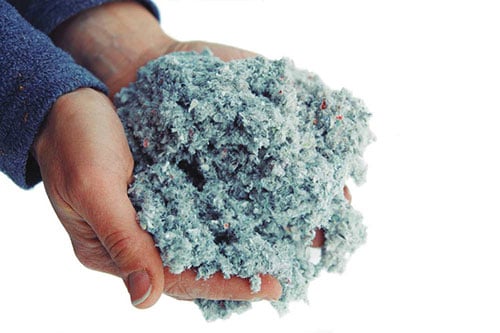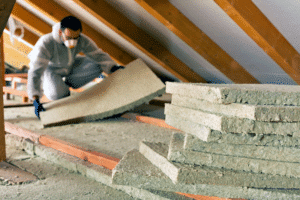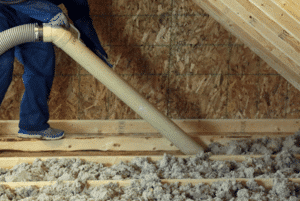How Much Does Cellulose Insulation Cost?


Getting the right insulation for your home is a major decision, but before you can get started you need to know how much the project is going to cost you.
The cost to insulate your home with cellulose will vary depending on several factors including size, labor, and supply cost. Since every home and project are different, for the purpose of this article we will give you a rough estimate for the material cost and labor.
RetroFoam of Michigan has more than 15 years of experience insulating homes across Michigan’s lower peninsula. We specialize in spray and injection foam insulations, but we also know about other insulation materials. As part of our efforts to educate our customers we are here to answer your questions about the cost of cellulose insulation.
 How Much Does it Cost to Install Cellulose Insulation?
How Much Does it Cost to Install Cellulose Insulation?
The average American home built in the 1970s is around 1,500 square feet. Cellulose insulation isn’t commonly used in retrofitting exterior walls. For the purpose of this article we will focus on the area where cellulose is most commonly used – the attic.
- Attic floor – If you are using a 19 pound GreenFiber low dust cellulose blow-in insulation it will cost about $276 and includes the free rental of the machine to blow the insulation in, according to Home Depot. If you decide to use cellulose batts made of denim, Home Depot charges around $1,887 for three pallet of 15 inch by 93 inch.
These prices are just estimated prices for materials based on a 1,500 square foot home from this one cellulose manufacturer. These prices do not include the cost of other supplies including but not limited to masks, safety glasses, work gloves, a straight edge, tape measure, utility knife, or fasteners.
Do-It-Yourself Versus Hiring a Contractor
When it comes to blown-in cellulose in an attic, that is a DIY project that can be handled with the rental of a machine. When it comes to other areas of your home, not so much.
Other forms of cellulose used in exterior walls and open cavities can only be installed by a contractor.
What is the Difference Between Cellulose Loose Fill, Dense Pack, and Wet Spray Insulation?
Cellulose insulation comes in three varieties – blown-in loose fill, dense pack, and wet spray. It can be used in both existing homes and new construction depending on the type of cellulose used. It can be blown as loose fill insulation in attic cavities, dense packed into walls and floors, or wet spray for new construction that helps increase heat retention and has the potential to dampen noise levels, according to the Energy Audit Blog.
Loose fill cellulose is primarily used in the attic in the flat cavities.
Dense pack cellulose is more commonly used today for adding retrofit insulation. The dense packing cellulose into wall cavities adds a thermal insulation while providing some level of sound proofing. When using dense pack for a retrofit project could require drywall repairs.
Wet spray cellulose has water added to it during the application process. The material has the same thermal and sound retardant properties as dense packing. Wet spray cellulose is almost always installed in new construction before the drywall is put up.
What is R-Value?
R-Value is an insulation’s ability to resist the flow of heat. That means insulation with a higher R-Value can provide more heat resistance. While this is good information to know, it doesn’t tell the whole story.
Reducing types of insulation to a number doesn’t paint the entire picture, since heat flows in and out through radiation and convection, or air flow. That heat loss can account for nearly 40 percent of the total energy lost in a home.
 Cellulose Insulation Installation Process
Cellulose Insulation Installation Process
Cellulose insulation can be installed as blown-in loose fill with a machine, dense packed, or sprayed with moisture added.
The dry blown insulation can be installed using a machine to blow the cellulose into the area to be insulated.
In existing homes, installers will remove a strip of exterior siding around waist high. They will then drill a row of three inch holes – one into each stud cavity. A special filler tube is then inserted and the insulation is blown-in densely packing the cavity. When installation is completed, the holes are sealed with a plug and the siding is replaced.
For new construction, cellulose can be either damp-sprayed or installed dry behind netting, according to the U.S. Department of Energy.
Comparing Cellulose to Foam Insulation
You now know the cost of cellulose insulation, but you may now feel it meets your short-term needs, but not the long-term.
Cellulose insulation tends to settle over time, making it a less effective insulation material while causing your energy bills to rise as the comfort in your home begins to plummet. We see it all the time as many of the homes we re-insulate have cellulose insulation that has settled or deteriorated over time. Foam is a better insulator compared to cellulose because it helps to create an air seal while keeping warm air in and cold air out, keeping homes comfortable year-round and energy efficient long-term.
You may you be curious about the benefits and cost of foam insulation as an alternative. If you live in Michigan’s lower peninsula and are ready to schedule a free in-home estimate give us a call at 866-900-3626, or fill out the form on our website.
About Amanda Emery
Amanda previously has worked as a breaking news and crime reporter, TV news producer, and editor in Flint and Detroit. Throughout her career as a journalist, she has won several awards from The Society of Professional Journalists - Detroit Chapter and the Michigan Press Association. As part of the RetroFoam of Michigan family, Amanda uses her experience as a journalist to write content that will help educate homeowners on the benefits of foam insulation. When Amanda isn’t writing, she’s spending time with her husband and rescued huskies. She also loves knitting, making art, cooking, and hosting dinner and a movie night for friends and family.


